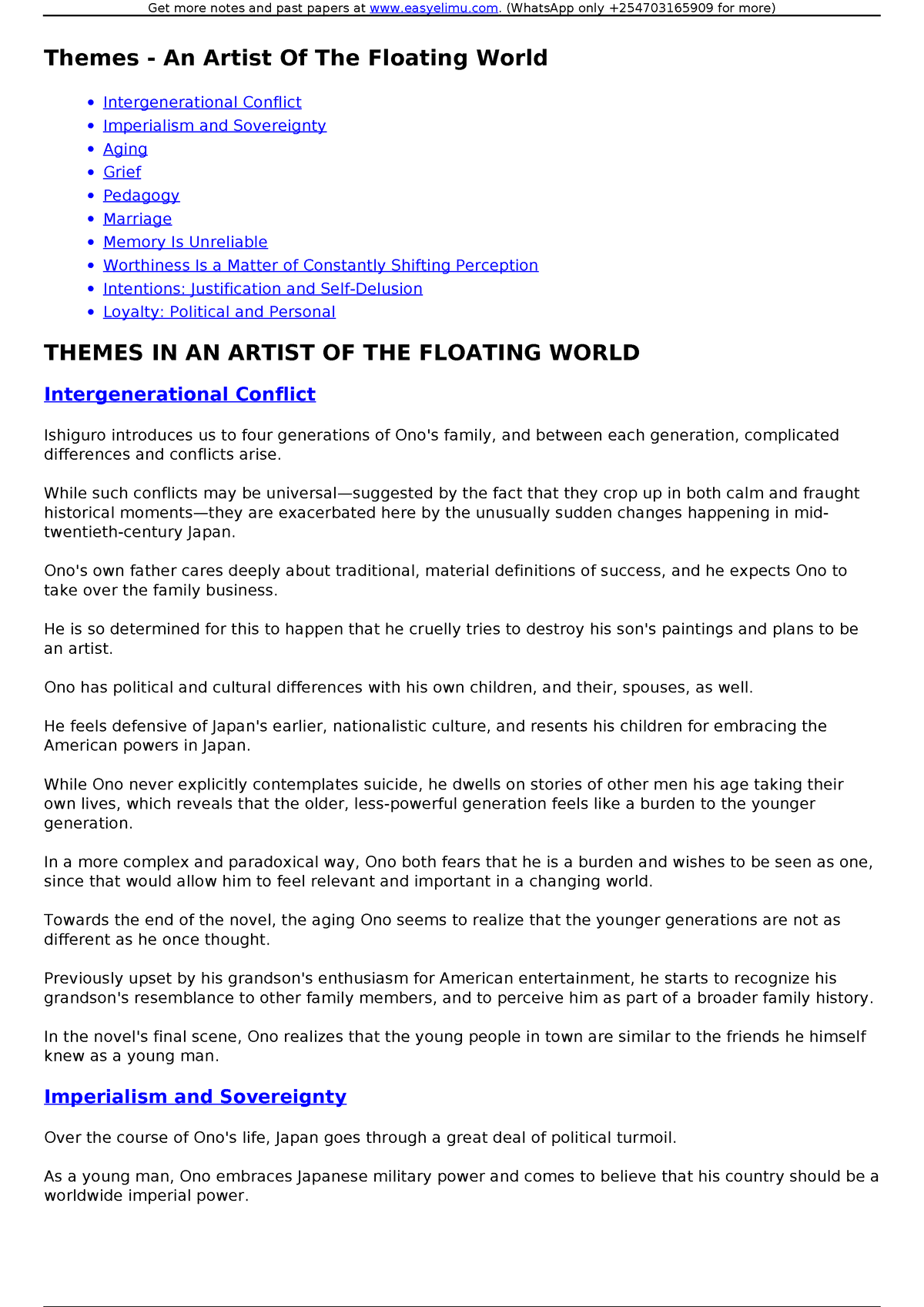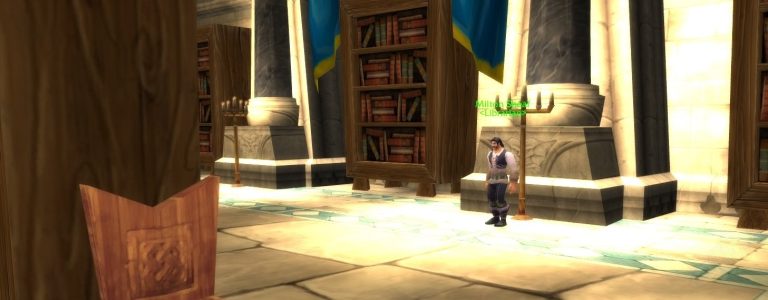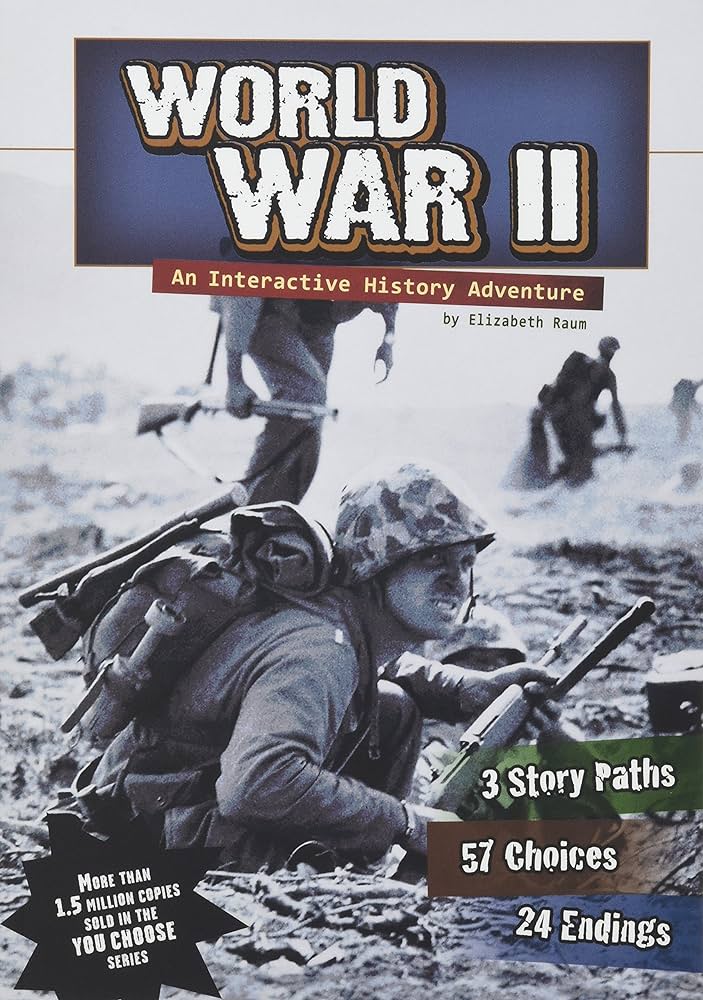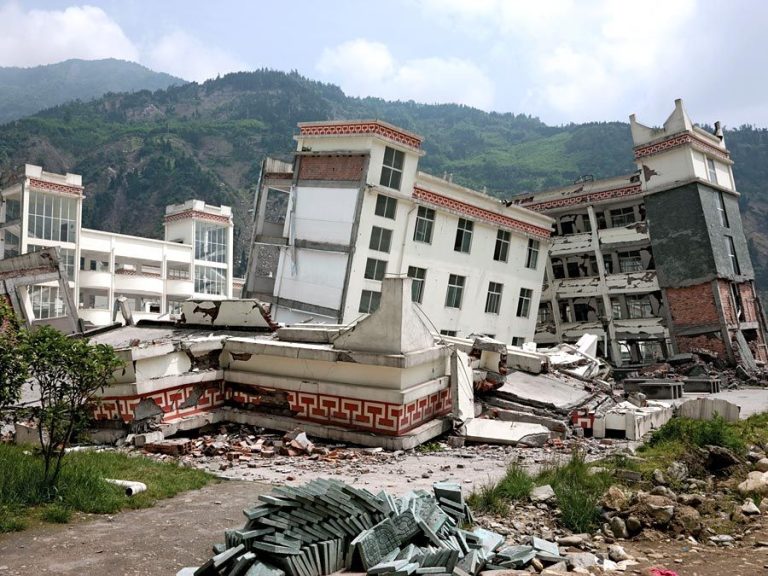Intergenerational Conflict In An Artist Of The Floating World
Intergenerational conflict is an important theme in Kazuo Ishiguro’s novel An Artist of the Floating World. The novel focuses on the life of Masuji Ono, an elderly artist looking back on his life and his involvement in Japan’s war efforts during World War II. Masuji’s journey is complicated by his children’s disapproval of his choices and the new directions they have chosen for their lives. This intergenerational conflict is a powerful element in the novel, and is used to explore themes of loyalty and betrayal, tradition and change, and the legacy of wartime decisions. Through Masuji’s journey, Ishiguro allows readers to consider how generations can work together to reconcile the past and create a better future.
Historical Context of Intergenerational Conflict in “An Artist of the Floating World”
Intergenerational conflict has been a long-standing theme in literature. In Kazuo Ishiguro’s acclaimed 1986 novel “An Artist of the Floating World,” these generational tensions are explored in the context of post-WWII Japan. Set in the 1950s, the novel follows protagonist Masuji Ono as he reflects on his life during the war and the choices he made. Ono’s struggles to reconcile his wartime actions with his post-war values, as well as the generational tensions between him and his children, form the core conflict of the novel.
The generational divide between Ono and his children is reflective of the societal divide between pre- and post-war Japan. In the wake of the war, Japan was in a state of disarray, and the older generation’s values had been largely invalidated. This divide is particularly poignant in Ono’s relationship with his daughter Noriko, who is representative of the younger post-war generation. The novel examines how the two generations, with their different values, perspectives, and experiences, struggle to coexist.
The conflict between Ono and his daughter is amplified by the characters’ differing views on morality, patriotism, and the war. While Ono is trying to come to terms with his wartime actions and the resulting guilt, Noriko is unable to comprehend the type of patriotism that led people to commit such acts. This creates an additional layer of tension between the two, as Ono’s attempts to explain his past actions are met with Noriko’s resentment.
Ishiguro’s novel provides a powerful exploration of intergenerational conflict in post-WWII Japan. Through the characters’ struggles to reconcile their differences, the novel highlights the complexities of the generational divide and the importance of understanding and acceptance.
Exploring the Source of Intergenerational Conflict
in an Artist of the Floating World
Intergenerational conflict is a common theme of many stories, and An Artist of the Floating World by Kazuo Ishiguro is no exception. The book follows the life of an elderly gentleman, Masuji Ono, as he reflects on his life and the decisions he has made in the past. Through his experiences, we can gain insight into the source of intergenerational conflict.
At the heart of the conflict is a clash between traditional values and modern, progressive views. Ono was raised in a culture where traditional values were emphasized, and he was expected to carry on the family legacy. However, his daughter, Sachiko, is part of a new generation with different values and beliefs. She is determined to forge her own path and refuses to be tied down by the expectations of her elders.
The novel touches on other sources of intergenerational conflict, such as conflicting communication styles, generational gaps in understanding, and different expectations of what constitutes a successful life. Ono’s inability to understand Sachiko’s perspective leads to a strained relationship between them, and this tension is at the center of the novel.
Ultimately, An Artist of the Floating World is a story that explores the source of intergenerational conflict. Through Ono’s experiences, we can gain insight into the struggle between traditional values and modern views, and the clash between different communication styles and expectations of success. Despite the tension that exists between generations, there is hope for reconciliation as Ono and Sachiko strive to come to an understanding.
Examining the Role of Tradition and Family in Conflict
Intergenerational conflict is a common theme in the novel An Artist of the Floating World, as the protagonist, Ono, struggles to reconcile his traditional values with his modern desires. Ono’s conflict is largely driven by his desire to break away from the customs and values of his ancestors, and the social and family pressures that come with them. Ono is caught between the old world and the new, and he must determine how much of his family’s traditional values he will adhere to in order to make his own way in the world.
Ono’s conflict is further complicated by his relationships with his children and grandchildren. Ono’s children and grandchildren are in many ways the embodiment of the modern world, and they challenge Ono’s traditional values and beliefs. Ono must decide how to balance his desire to maintain his traditional values while also allowing his children and grandchildren to experience the freedoms of the modern world.
The conflict between tradition and family is a major theme in An Artist of the Floating World, and it is explored in detail throughout the novel. Ono’s struggle to reconcile his traditional values with his own modern desires provides readers with an insight into the complex nature of intergenerational conflict and the challenges that come with it. Examining the role of tradition and family in conflict is essential to understanding the novel’s central themes and the importance of respecting and understanding one another across generations.

The Impact of the War and its Aftermath on Intergenerational Conflict
The aftermath of the Second World War had a lasting and significant impact on all nations, and Japan was no exception. In ‘An Artist of the Floating World’, Kazuo Ishiguro uses the story of Masuji Ono, a former artist and World War II veteran, to explore the intergenerational tension that results from the war’s legacy. Set in post-war Japan, the novel follows Masuji as he reflects on his life, his role in the war, and the relationships he had with his children and grandchildren.
The novel highlights the generational divide that emerged in post-war Japan between those who were born before and after the war. Masuji’s children and grandchildren have a different worldview than he does, and this contributes to the conflict between them. The younger generations are more likely to question the decisions of their elders, and Masuji’s children often challenge his beliefs and decisions. Masuji’s inability to come to terms with his role in the war and his refusal to accept responsibility for his actions also contributes to the tension between him and his children.
The novel shows how trauma, memory, and guilt can be passed down through generations and how intergenerational conflict can be a result of war and its aftermath. Ishiguro’s depiction of Masuji provides an important insight into the challenges faced by aging veterans and their families in post-war Japan. ‘An Artist of the Floating World’ is a powerful exploration of the lasting impact of war, and its effects on intergenerational relationships.
Analyzing the Impact of Intergenerational Conflict on Masuji Ono
Intergenerational conflict is a common theme in Kazuo Ishiguro’s novel, An Artist of the Floating World. Through the character of Masuji Ono, Ishiguro examines how generational conflict creates a sense of alienation and confusion in one’s life. Through Masuji’s perspective, the reader is able to observe how intergenerational conflict can adversely affect an individual’s mental and emotional wellbeing.
At the start of the novel, Masuji is a successful and respected artist in Japan’s traditional art scene. He is a revered figure in his community, and his work is highly sought after. However, as the novel progresses, Masuji’s relationship with his son, Shintaro, becomes increasingly strained. The two men are on opposite sides of the political spectrum, and their disagreements lead to heated arguments. The resulting hostility causes Masuji to feel a deep sense of guilt and regret for the choices he made in his life.
The intergenerational conflict between Masuji and Shintaro is a reminder of how generational divides can lead to alienation and estrangement. As Masuji struggles to reconcile his past, he is forced to confront the consequences of his decisions and the impact they had on his life. Through Ishiguro’s exploration of generational conflict, readers are able to gain a greater understanding of the consequences of intergenerational conflict.
Implications for Intergenerational Relationships Today
Intergenerational conflict is a common theme throughout literature and art. It is a powerful tool used to explore the complexities of the human experience. In the novel An Artist of the Floating World, the author, Kazuo Ishiguro, examines the effects of intergenerational conflict on the protagonist, Ono, and those around him. Through a deep exploration of Ono’s relationships with his children and his elderly father, Ishiguro paints a vivid picture of the tension between generations. While the novel is set in post-World War II Japan, the implications of intergenerational conflict are still relevant today. As the world becomes increasingly interconnected, the generational divide can create tension between family members, friends, and colleagues.
In An Artist of the Floating World, Ishiguro explores the complex emotions of intergenerational conflict, such as anger, distrust, and guilt. Ono’s children, for example, are frustrated with his traditional beliefs and values, feeling that he does not understand their lives or their dreams. Similarly, Ono struggles to come to terms with his children’s more modern outlook, and this tension between generations is further compounded by the trauma of war and the rapid changes in Japanese society.
By examining the complex nature of intergenerational relationships, Ishiguro sheds light on the difficult conversations that need to be had between the generations in order to bridge the gap. He encourages us to learn from the past and to take into account the different perspectives and experiences of those around us in order to build stronger relationships. In the end, An Artist of the Floating World provides an insightful exploration of the implications of intergenerational conflict that can be applied to our own lives today.
FAQs About the Intergenerational Conflict In An Artist Of The Floating World
Q1: What is intergenerational conflict in “An Artist of the Floating World”?
A1: Intergenerational conflict is the struggle between two generations with different beliefs and values. In “An Artist of the Floating World”, the conflict centers around the relationship between the elderly Masuji Ono and his daughter Noriko. Masuji is trying to maintain his traditional values while Noriko is pushing for modernization and change.
Q2: How does the intergenerational conflict in the novel affect the story?
A2: The intergenerational conflict in the novel serves as a driving force behind the story, as it is the source of tension between Masuji and Noriko. Masuji’s refusal to accept Noriko’s modern ideas and values leads to a strained relationship between the two, and is the foundation of the conflict in the novel.
Q3: How does the resolution of the intergenerational conflict in the novel affect Masuji?
A3: The resolution of the intergenerational conflict between Masuji and Noriko ultimately leads to Masuji’s acceptance of Noriko’s modern values. This helps Masuji to come to terms with his own past mistakes, and ultimately brings closure to his life.
Conclusion
Intergenerational conflict is a major theme in Kazuo Ishiguro’s An Artist of the Floating World. Through the story of Masuji Ono, the novel examines the conflict between the generations in post-war Japan, as well as the tension between the traditional and modern worlds. Ono’s struggle to reconcile his past with his present serves as a metaphor for a nation in turmoil. Despite the challenges of the post-war environment, Ishiguro suggests that understanding and acceptance are the keys to overcoming intergenerational conflict. Ono’s eventual acceptance of his role in the past serves as a reminder that we must all accept our pasts in order to move forward.




